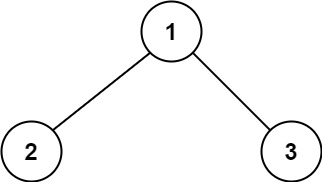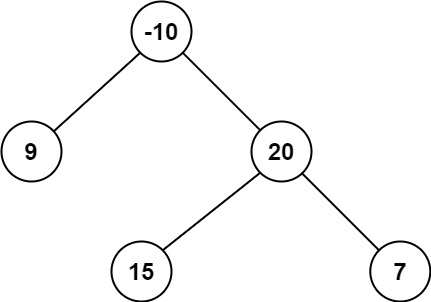[LeetCode] 124. Binary Tree Maximum Path Sum(二叉树的最大路径和)
- Difficulty: Hard
- Related Topics: Tree, Depth-first Search, Recursion
- Link: https://leetcode.com/problems/binary-tree-maximum-path-sum/
Description
Given a non-empty binary tree, find the maximum path sum.
给定一非空二叉树,找到其最大路径和。
For this problem, a path is defined as any node sequence from some starting node to any node in the tree along the parent-child connections. The path must contain at least one node and does not need to go through the root.
对于这个问题,『路径』被定义为树中任意一节点,经由父子节点间的连接,经过若干节点,到达树中另外一节点的节点序列。该序列需至少包含一个节点,且并不要求一定要经过树根。
Examples
Example 1

Input: root = [1,2,3]
Output: 6
Example 2

Input: root = [-10,9,20,null,null,15,7]
Output: 42
Constraints
- The number of nodes in the tree is in the range
[0, 3e4]. -1000 <= Node.val <= 1000
Solution
一遇到二叉树的题目,递归解题通常是首先考虑的。在本题中,最大盒的路径可能有以下几种情况:
-
完全位于左子树;
-
完全位于右子树;
-
跨越
root。
于是可以写出以下代码:
/**
* Example:
* var ti = TreeNode(5)
* var v = ti.`val`
* Definition for a binary tree node.
* class TreeNode(var `val`: Int) {
* var left: TreeNode? = null
* var right: TreeNode? = null
* }
*/
import kotlin.math.max
class Solution {
private var result = Int.MIN_VALUE
fun maxPathSum(root: TreeNode?): Int {
result = Int.MIN_VALUE
dfs(root)
return result
}
private fun dfs(root: TreeNode?): Int {
if (root == null) {
return 0
}
val leftVal = max(dfs(root.left), 0)
val rightVal = max(dfs(root.right), 0)
result = max(result, leftVal + root.`val` + rightVal)
return max(leftVal, rightVal) + root.`val`
}
}
上述代码里要注意的地方有二:一是递归函数的返回值,返回的是左/右子树和的最大值。二是如果遇到左右子树和为负数的情况时,要舍去。


